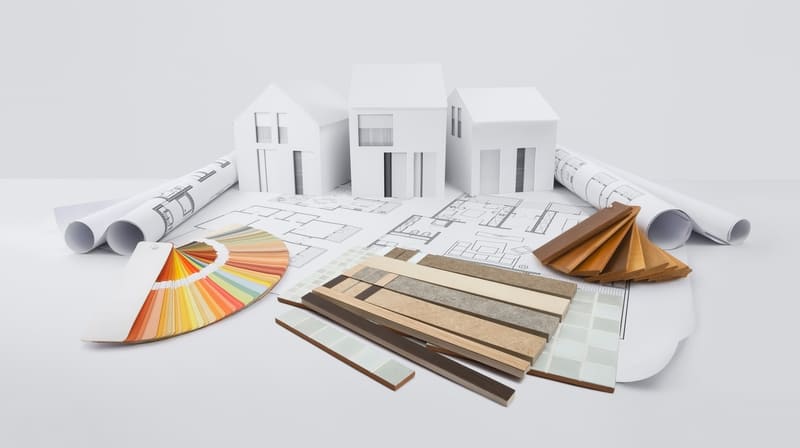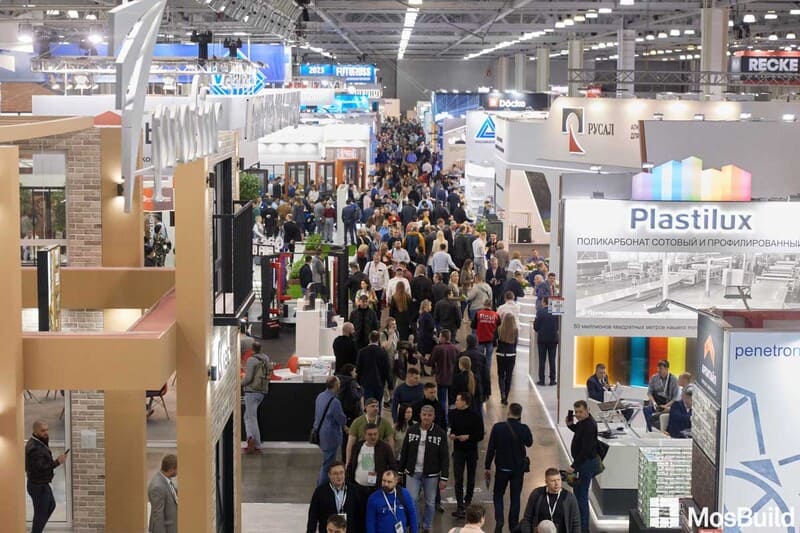Russian Construction Industry: Moving Upward?

Today, wide opportunities for the international producers and suppliers of building and interior materials open up in the Russian market
Since 2020, Russian construction sector has been facing several strong challenges. First, due to the coronavirus pandemic, most construction work was suspended (except for public facilities’ projects). Then, under the influence of state-supported mortgages, the demand for new buildings went up sharply. Since February 2022, the construction sector has been forced to reorganize to work in the new conditions.
Of course, the Russian construction market can take the past year into an asset: in 2022, total construction volume reached 160 million square meters of real estate: 8% more than in 2021. At the same time, such dynamics can only partly be explained by successful transformation: several projects were laid down in 2019–2020, secured with funding, and last year were already at the final stages. At the same time, in 2022 construction volume in money terms was almost 13 trillion rubles: 5% more than in 2021.
Residential construction remains the main driver. Thus, last year it reached 126.7 million square meters. In 2022, the PHC share in the total commissioning volume was 56%: the reason for these positive dynamics was the launch of mortgage programs for suburban housing. Furthermore, the Russian Construction Industry and Public Utilities’ Development Strategy sets the following goals by 2030: 1 billion sq. m – total 10-year volume of housing to be commissioned; 20% of the whole housing stock to be renovated; and housing provision to grow from 27.8 sq. m up to 33.3 sq. m per person.
As per commercial real estate construction, in 2022 it decreased by 1.2% vs 2021 (33.6 million sq. m vs 34 million sq. m). However, as the Russian economy has adjusted to the new conditions, the interest in CRE gradually began to recover. The incentive measures of the authorities also played their role: i.e., in Moscow, developers can get supportive discounts in housing construction if they create new places of employment (hotels, offices, warehouses, techno parks) between the Third Ring Road and Moscow Ring Road.

Changes and Niches
European ceramics, clinker tiles and marble suppliers exit the market. In 2017–2022, building ceramics’ imports in Russia increased by 25.3% in money terms and by 20.9% in terms of volume. Marble imports increase by 19.5% and 7.8% respectively.
As of 2022, the share of imported porcelain stoneware and ceramic tiles was about 23%. The share of imported facade clinker tiles amounted to a record-breaking 95% - states the study of the Russian Ministry of Construction of Russia.
Italy, Germany, and Spain were the main suppliers of ceramics and marble until February 2022. Now, Chinese, and Turkish products have partially substituted Western European brands, but the Russian market is still open to new suppliers from other countries.
European faucet suppliers exit the market. According to the analytical company PKR, the total volume of the domestic faucet market in 2022 reached 110 billion rubles. At the same time, the share of imported products in this segment reached 99% last year. Surprisingly, Russia has the only plant that has capacities to cast such products.
Significant changes occurred in the context of importing countries over the past year. If until February 2022 about a third of the market accounted for German and Italian faucets, and these premium segment products are very difficult to be replaced. Big retailers solve the problem of replacing the range of brands that have left the market developing their private labels placing orders for production abroad, incl. China.
Termination of supplies of equipment to produce building materials. The share of imported machinery and other equipment at Russian building materials’ enterprises in 2022 was about 70%. Since the spring of 2022, several manufacturers of building materials have fixed problems with the supply of new equipment and spare parts. The parallel import of such products is fraught with many difficulties: not all suppliers are ready for multi-way mechanisms, increased delivery time, and prices. The release of completely Russian analogues is rather a matter of the medium term because this will require not only the re-equipment of production, but also the development from scratch.

Growth Points
Entry to the Russian market of new producers (including those from the EAEU). Ambitious goals to achieve 120 million sq. m of the housing annual commissioning by 2030, as well as intensification of civil, infrastructural, and other construction, will lead to growing demand for building materials.
If the main materials (sand, cement, crushed stone, metal) for construction sites can be provided by Russian suppliers, then in the segments of facade materials or fasteners, new suppliers have good chances to gain a foothold in the market. In this regard, the EAEU countries have two major advantages: fewer administrative barriers to entering the market, as well as the similarity of internal production standards.
Supply of equipment for the materials’ production. As mentioned above, the share of imported equipment used in the building materials’ production is over 70%. In 2022 – beginning 2023 the enterprises somehow solved their problems with maintenance or repair with the help of accumulated stocks, then now, as they are exhausted, the problem of finding alternatives has become especially acute. International producers should use this chance to bring their equipment to the Russian market.
DIY segment. The largest Russian retailers (OZON, Wildberries, Yandex Market, Leroy Merlin, Petrovich, OBI, Maksidom, VseInstrumenty.ru), according to the PKR analysts, account for up to 40% of the total DIY market that reached 2 trillion rubles last year with significant share of e-commerce (18%).
OZON, Leroy Merlin, Petrovich, VseInstrumenty.ru, Yandex Market are the most active market players in the sector. In 2022, in some segments of the DIY market (sanitaryware, wallpaper, paints, ceramic tiles) similar trends were observed. With a decrease in the volume of purchases (by 3–6%), the average price increased by 10–14%.
At the same time, buyers have gradually adapted to the new normal, and demand gradually has been returning to usual trends, like seasonal sales growth. Therefore, now several retailers are actively looking for new partners, which gives international companies a chance to enter the promising Russian market.

MosBuild is your business navigator in the Russian construction industry
Exhibiting in MosBuild provides new market players with great opportunities. In 2023, 80.696 specialists attended MosBuild, and 1.025 companies were exhibitors. It is worth noting that 94% of visitors influence purchasing decisions so that you can agree on cooperation directly at the show. MosBuild is attended by major distributors, wholesalers, retailers, construction, repair, and real estate development companies, as well as architects and designers from all Russian regions and the CIS countries. Thus, MosBuild 2024 matches international producers and suppliers with maximum target audience in a short time and delivers tools to comprehensively solve their business goals.
